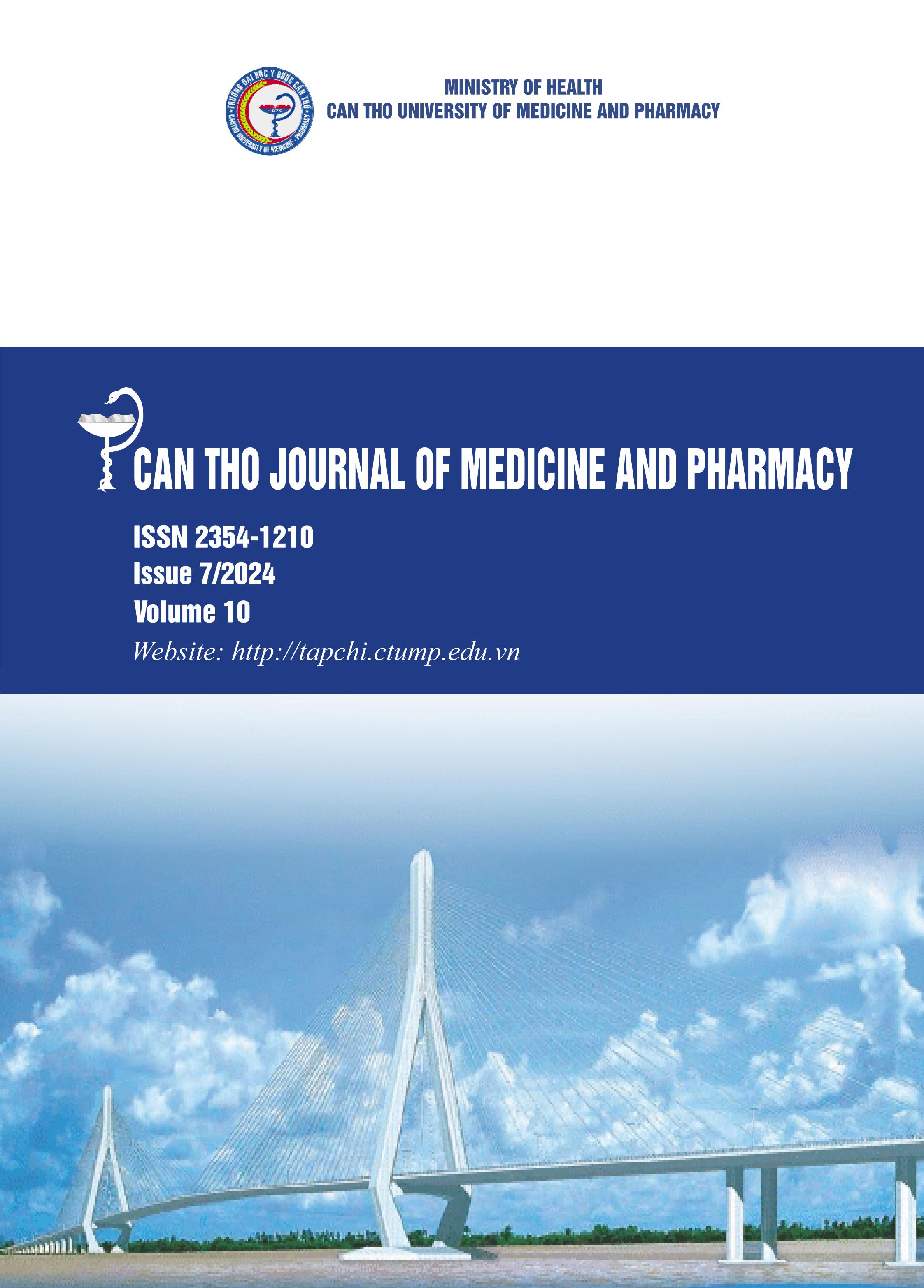SALIVARY CHARACTERISTICS AMONG 12-YEAR-OLD CHILDREN WITH SIGNIFICANT CARIES INDEX FROM URBAN AND SUBURBAN SCHOOLS IN CAN THO CITY
Nội dung chính của bài viết
Tóm tắt
Background: Dental caries is the most prevalent chronic childhood disease with numerous predisposing factors. Salivary properties have been linked to progressive dental caries in previous studies. However, the role of these contributing factors in the management of dental caries in children remains insufficient. Thus, the investigation of salivary characteristics from different types of communities within a specific pediatric population is an obvious demand. Objectives: To assess the salivary characteristics among school-going children aged 12 years from two urban and suburban schools in Can Tho city. Materials and methods: A cross-sectional descriptive study was conducted on 62 twelve-year-old students with significant caries index in two locations with different socioeconomic status in Can Tho city. Those participants underwent saliva testing by using a saliva testing kit (Saiva-Check BUFFER) to evaluate stimulated and unstimulated saliva parameters including consistency, flow rate, pH and buffering capacity. Results: Out of the total population, males and females made up 40.3% and 59.7%, respectively. Both boys and girls had similarities in all salivary parameters (p > 0.05). Nearly half of suburban students (48.4%) had resting frothy bubbly saliva while more than half of urban students (58.1%) had watery clear saliva at rest. All students had moderate and normal acidic saliva before and after stimulation regardless of living areas. The discrepancy in resting salivary viscosity, resting salivary pH was statistically significant based on region (p < 0.05). 64.5% of the students in both suburban and urban enclaves had a normal stimulated saliva flow rate. In contrast, a normal or high buffering capacity of stimulated saliva was only seen in a few students. Regarding the flow rate, pH, and buffering capacity of stimulated saliva, there were no differences between urban and suburban areas (p > 0.05). Conclusions: The findings of this study provide additional proof of the significance of salivary properties in assessing dental caries, especially in socioeconomic deprivation areas. Furthermore, it also implies that salivary parameters should be taken into account as a potential indicator for managing high caries-risk children.
Chi tiết bài viết
Từ khóa
caries, children, saliva, suburban, urban
Tài liệu tham khảo
2. Roblegg E., Coughran A., and Sirjani D. Saliva: An all-rounder of our body. European Journal of Pharmaceutics and Biopharmaceutics. 2019. 142, 133–141. https://doi.org/10.1016/j.ejpb.2019.06.016.
3. World Health Organization. Global Oral Health Status Report: Towards Universal Health Coverage for Oral Health by 2030. World Health Organization. 2022. 30.
4. Mazengo M.C., Söderling E., Alakuijala P., Tiekso J., Tenovuo J. et al. Flow rate and composition of whole saliva in rural and urban Tanzania with special reference to diet, age, and gender. Caries Research. 1994. 28(6), 468–476. https://doi.org/10.1159/000262022.
5. González-Aragón Pineda A.E., García Pérez A., and García-Godoy F. Salivary parameters and oral health status amongst adolescents in Mexico. BMC Oral Health. 2020. 20(1), 190.
https://doi.org/10.1186/s12903- 020-01182-8.
6. Andegiorgish A.K., Weldemariam B.W., Kifle M.M., Mebrahtu F.G., Zewde H.K. et al. Prevalence of dental caries and associated factors among 12 years old students in Eritrea. BMC Oral Health. 2017. 17(1), 169. https://doi.org/10.1186/s12903-017-0465-3.
7. Kedjarune U., Migasen P., Changbumrung S., Pongpaew P., and Tungtrongchitr R. Flow Rate and Composition of Whole Saliva in Children from Rural and Urban Thailand with Different Caries Prevalence and Dietary Intake. Caries Research. 1997. 31(2), 148–154. https://doi.org/10.1159/000262390.
8. Duong Hoai Giao Ha. A survey of some risk factors related to dental caries among children aged 12 years in Cai Rang district, Can Tho city. Can Tho University of Medicine and Pharmacy. 2008.
9. García-Godoy F., and Hicks M.J. Maintaining the integrity of the enamel surface: The role of dental biofilm, saliva and preventive agents in enamel demineralization and remineralization. Journal of the American Dental Association. 2008. 139 (Suppl), 25S-34S. https://doi.org/10.14219/jada.archive.2008.0352.
10. Hu Z., Yan X., Song Y., Ma S., Ma J. et al. Trends of dental caries in permanent teeth among 12year-old Chinese children: evidence from five consecutive national surveys between 1995 and 2014. BMC Oral Health. 2021. 21(1), 467. https://doi.org/10.1186/s12903-021-01814-7.
11. Gaur A., Anup N., and Sharma R. Variation in Salivary Parameters and its Correlation with Plaque and Gingival Status among 12 to 15 Years Schoolchildren of Rural and Urban Jaipur City in Winter and Summer Seasons. International Journal of Clinical Pediatric Dentistry. 2012. 5(1), 39–48. https://doi.org/10.5005/jp-journals-10005-1132.


